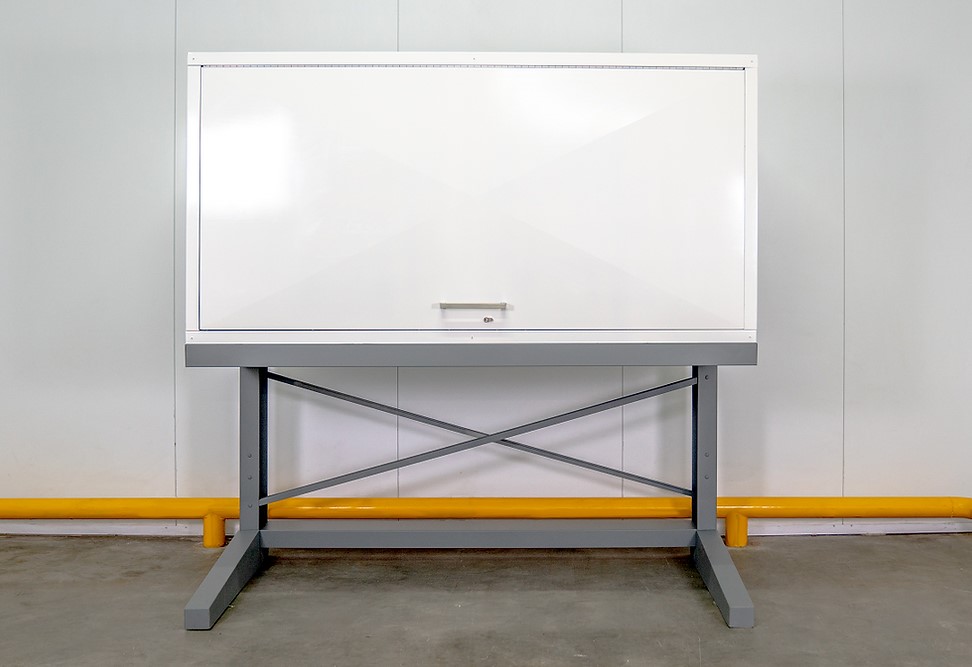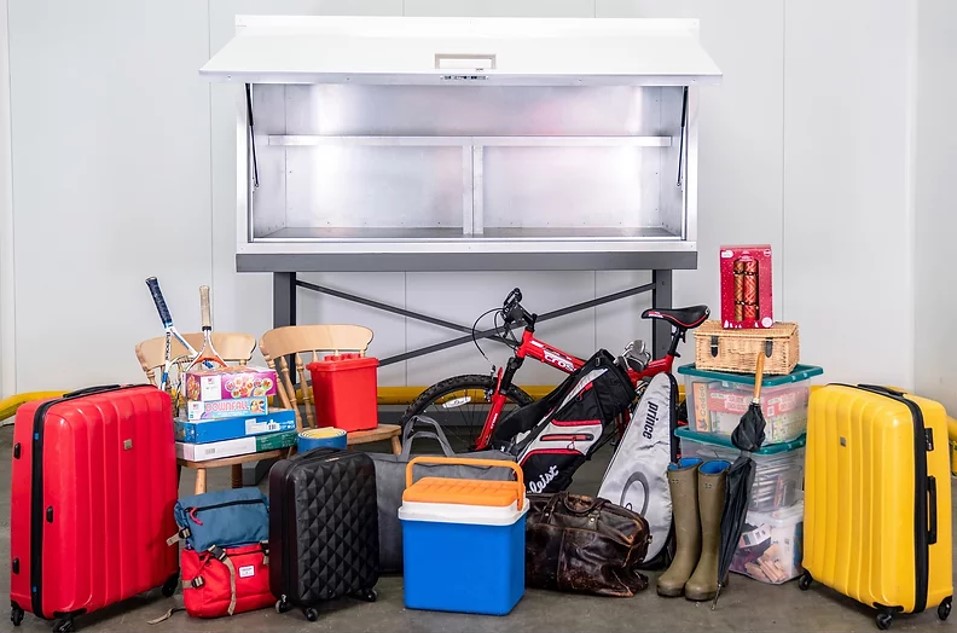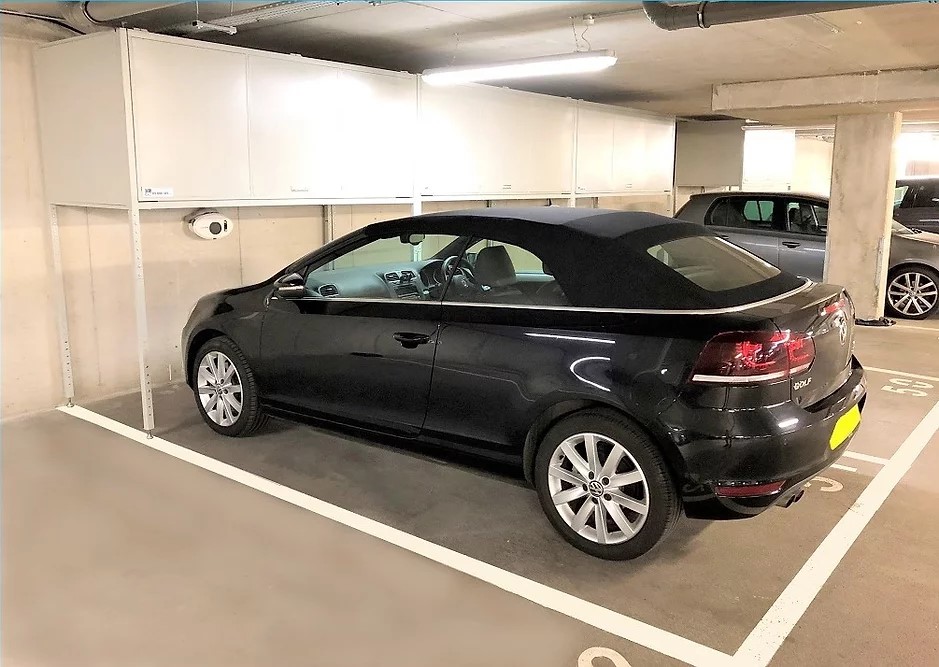The internal storage provision within newly built apartments has typically been reducing over time, for a variety of reasons.
Here are 12 pointers as to why the provision of car park storage is a solution which makes financial sense to operators and developers while adding to resident satisfaction.
1. Why do BTR developments need car space storage?
The combination of reduced internal storage and quicker possession accumulation are expected to continue as long term trends.
The availability of extra, on-site storage as an amenity option is therefore becoming increasingly expected by residents. With regard to supporting resident mental health, storage has been identified as a Top Five amenity for resident wellbeing, by independent studies.
Car Space storage cabinets have the added benefit of not taking up any ground space, which leaves more area free for other uses and amenities.

Extra amenity: Car space storage. Picture credit - Car Park Storage
2. It’s a validated demand
The maturity and scale of the self-storage market (in the UK and globally) proves people want storage and are willing to pay for it.
The self-storage business is recognised as one of the highest performing investment asset classes, because of:
- The high level of demand
- Reluctance of customers to terminate their storage lease once they have moved their possessions into it
- Long term, recurring income that self-storage facilities consistently generate
- A car space storage cabinet typically rents at £40 pcm
- A storage container of equal size (referred to as a telephone box size) at a local self-storage warehouse typically costs between £70-£120 per month, depending on the location in the UK
3. It’s a recurring-revenue asset
Users of self-storage typically require storage for a medium or long term.
On average, external warehouse self-storage units are leased by a customer for 2.5 years, with one in three customers leasing for more than three years.
Within a BTR development, a storage cabinet can be offered at varying rates depending on factors such as the duration of the resident’s lease and how many car spaces they rent.
With car space storage cabinets, an example of revenue is:
- Lease each unit @ £40 per month = £480 per year revenue
- 30 car-space storage units in a car park of 300 car spaces
- Generates an extra £480 x 30 = £14,400 per year
4. They have a long working life
Car space storage cabinets typically have a long, 10-15year+ working life and, because of their solid, all-steel construction, plus limited moving parts – two gas struts, one long hinge and the lock on the door – should need little maintenance.
The customer can have confidence that their possessions are safe and secure and will be available to be accessed whenever they want. The unit should function correctly for the full duration of their time at the development, without having being inconvenienced with repairs or having to switch to a different unit.
5. Short pay-back period for simple revenue-generating asset
The typical payback on a 10-15 year+ working-life asset is two to three years, depending on how quicky the asset owner wants to make a profit, the demand for storage within the development, how much residents are willing to pay and whether there are any other storage options easily available.

Fitting in: Sport gear and bikes can be stored securely. Picture credit - Car Park Storage
6. Increase the yield from individual car spaces
Car space cabinets can present a simple opportunity to significantly increase the yield from a car space and the car park in general.
There can be a typical yield increase of 30-50% for each car space.
If residents wish to have storage but don’t have a car, there is the opportunity of creating a storage hub – consisting of eight units – within two unused car spaces.
7. Fire safety considerations
A key step in accessing the safety of installing car space storage cabinets is that the cabinets do not impede the access to or function of fire safety equipment, settings, procedures or systems within the car spaces, car park or building.
Advice and guidance regarding cabinet siting should be provided by the car space storage cabinet supplier.
It is reassuring that the frequency of fires in residential car parks is traditionally very low, especially when compared to the frequency of fires inside residential apartments.
A study from the BRE found there are approximately 7,500 fires in UK apartments per year compared to 15 fires in residential car parks.
A good quality car space storage cabinet should:
- Be made from A1/A2 fire rated materials
- Provide 60 mins+ fire protection for the contents within a cabinet
- Be independently fire tested by a formal, recognised body (such as the Fire Protection Association – FPA)
- Have the fire test report readily available for potential customers
- Not be a potential cause of or contribute to the spread of fire
- Be able to withstand a car park fire and remain structurally intact
- Be able to contain a fire internally that does not have a means for escape
8. Smart lock management and integration
Some car space storage cabinets have the option for a smart lock which means there is no need for key use or key or lock replacement.
Smart locks enhance security and mean access can be managed remotely as well as integrating with existing door security or building access.
They also generate real-time usage data for management reporting which can inform future cabinet investment.
9. A low-maintenance asset
If the locking system is keyless, there will be a requirement to change the batteries on the locks periodically (for example every two years), unless there is a power source connected into the cabinet.
Unlike assets such as coffee machines and gym machines, a standard car space storage cabinet requires relatively little maintenance.
The revenue-generating amenity of extra storage can be introduced without using up valuable floorspace.

'Storage from air'. Picture credit - Car Park Storage
10. Near zero space requirement – ‘storage from air’
The storage is conveniently above the resident’s car, which is especially helpful when unloading bulky, periodic use sports equipment such as golf clubs and children’s kit such as car safety seats.
For developers and operators, if storage is being provided over cars instead of in a storage room, that space in the building can instead be utilised as a yoga centre, movie room or other amenity offering.
The revenue-generating amenity of extra storage can be introduced without using up valuable floorspace. In a car park with 300 car spaces, 25,000-30,000 cubic feet of storage can be created, out of the air above the car bonnets.
The width of a standard cabinet is 2.2m-2.4m, so a car can safely park without touching the feet / legs of the cabinet.
11. Reduce the size of the cycle store
The cabinets can typically easily hold 2-3 adult bikes, so therefore each car space storage cabinet can reduce the number of bike storage spaces by a factor of the requirement per apartment.
It means the resident can keep their bike in a private and more secure cabinet, rather than having it in the bike store or kept in their home. With the increased value of the bikes and the risk associated with keeping a bike in a shared bike store (even the most well monitored bike stores can experience thefts), many residents may welcome a more secure option.
For developers, car space storage creates the opportunity of converting bike store space back into car spaces. There is often high demand for car spaces and it can be a key reason for customers to decide on agreeing or declining a renting opportunity.
12. Asset retains significant resale value on balance sheet
Even after write-down, the asset can retain a resale value of around 40-50% of cost.
Car space storage cabinets can represent an attractive long term investment, where there is a demand for extra storage from residents.